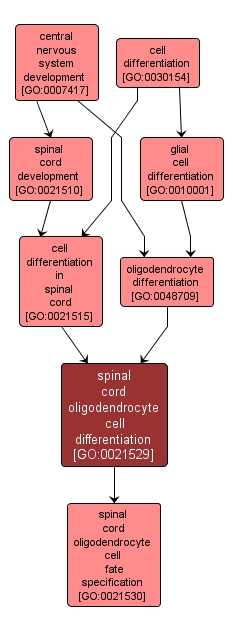| Desc: |
The process whereby neuroepithelial cells in the neural tube acquire specialized structural and/or functional features of oligodendrocytes. Oligodendrocytes are non-neuronal cells. The primary function of oligodendrocytes is the myelination of nerve axons in the central nervous system. Differentiation includes the processes involved in commitment of a cell to a specific fate. |














